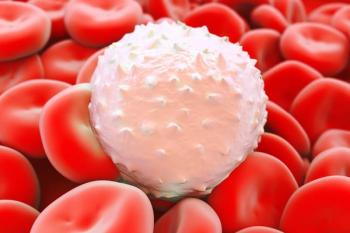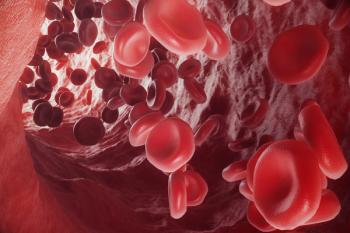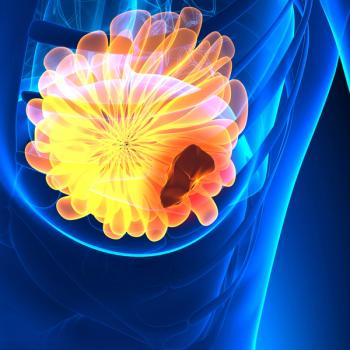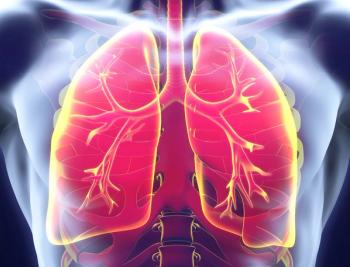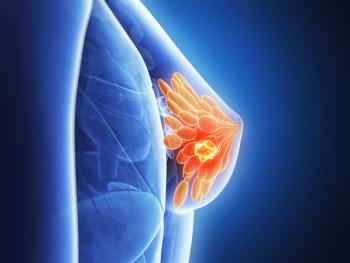
Risk of Cardiotoxicity Not Increased With Radiation Therapy in Certain Patients With HER2-Positive Breast Cancer
Patients receiving trastuzumab for HER2-positive breast cancer on the phase 3 HERA trial did not have an increased risk of cardiotoxicity from radiation therapy.
Radiation therapy was not significantly associated with an increase the risk of cardiotoxicity in patients with HER2-positive breast cancer who were treated with trastuzumab (Herceptin), according to an analysis of the phase HERA trial (NCT00045032) that was presented at the 2021 American Society for Radiation Oncology.1
When patients were assessed in 3 groups, the incidence of significant left ventricular ejection fraction (LVEF) was 28.22% in patients receiving left-sided radiation therapy (group 1), 29.54% in those with right-sided radiation therapy (group 2), and 26.85% in those receiving no radiation therapy (group 3; P = .484). The lowest incidence of cardiovascular events was in group 3 at 0.62% vs group 2 with 0.92% and group 1 with 1.08% (P = .619).
“This suggests that the LVEF decline is mainly related to bassline systemic therapy that the patients receive prior to starting radiation therapy,” Yousesef Zeidan, MD, PhD, said during the presentation.
Patients with HER2-positive breast cancer are often treated with anthracyclines which are known to cause dose-dependent cardiomyopathy with 1.6% to 2% treated in clinical trials experiencing heart failure. Trastuzumab has also been associated with reversable cardiomyocyte dysfunction with 2% to 4% of patients experiencing heart failure and 3% to 18% experiencing asymptomatic cardiac dysfunction.2
This current trial evaluated patients from HERA who were either observed (n = 1693) or received 1 to 2 years of trastuzumab (n = 3388).3 This study had 11 years of follow-up with an echocardiogram done at baseline, every 3 months, then annually. Investigators further divided the trastuzumab arm in groups 1 (n = 1270), group 2 (n = 1271), and group 3 (n = 780).
Patients in group 1 had a mean age of 49.22 years, with patients in group 2 at 48.71 years and group 3 at 49.55 years (P = .1628). In group 1, 94.65% of patients (n = 1202) received anthracycline therapy vs 96.38% (n = 1225) in group 2 and 88.97% (n = 694) in group 3 (P <.001). Notably, receipt of taxane therapy was similar in groups 1 and 2 at 28.74% (n = 365) and 30.61% (n = 389), respectively, but was lower in group 3 at 15.00% (n = 117; P <.001). Additionally, the mean baseline LVEF in group 1 was 64.28, was 64.29 in group 2, and was 64.04 in group 3 (P = .7004).
Rates of mastectomy were higher in group 3 (66.7%) compared with group 2 (29.27%) and group 1 (31.02%; P <.001). In addition, patients in group 3 were more likely to have a smaller tumor at baseline with 10.16% in group 1 and 9.60% in group 2 having tumor size of 50 or more vs only 4.23% in group 3 (P <.001). Cardiac-associated baseline characteristics such as smoking, diabetes, hyperlipidemia, hypertension, coronary disease, and LVEF were similar between groups.
In the multivariate analysis, no treatment or baseline cardiovascular risk factors were strongly correlated with LVEF, but radiation therapy showed a borderline correlation (adjusted HR, 1.258; 95% CI, 1.00-1.58; P = .049). On multivariate analysis of cardiovascular events, the only factor that showed significant correlation was age older than 55 years (adjusted HR, 3.189; 95% CI, 1.16-8.76; P = .025).
“Technological advances in the RT [radiation therapy] planning and delivery resulted in lower rates of cardiotoxicity. The cardiotoxicity of RT in the setting of newer HER2 agents needs further evaluation,” concluded Zeidan.
References
1. Bachir B, Anouti S, Abi Jaoude J, et al. Evaluation of cardiotoxicity in HER-2 positive breast cancer patients treated with radiation therapy and trastuzumab. Int J Radiat Oncol Biol Phys. 2021;111(suppl 3):S7. doi./10.1016/j.ijrobp.2021.07.050
2. Jones LW, Haykowsky MJ, Swartz JJ, Douglas PS, Mackey JR. Early breast cancer therapy and cardiovascular injury. J Am Coll Cardiol. 2007;50(15):1435-1441. doi:10.1016/j.jacc.2007.06.037
3. Cameron D, Piccart-Gebhart MJ, Gelber RD, et al. 11 years' follow-up of trastuzumab after adjuvant chemotherapy in HER2-positive early breast cancer: final analysis of the HERceptin Adjuvant (HERA) trial Lancet. 2017;389(10075):1195-1205. doi:10.1016/S0140-6736(16)32616-2.
Newsletter
Stay up to date on recent advances in the multidisciplinary approach to cancer.


